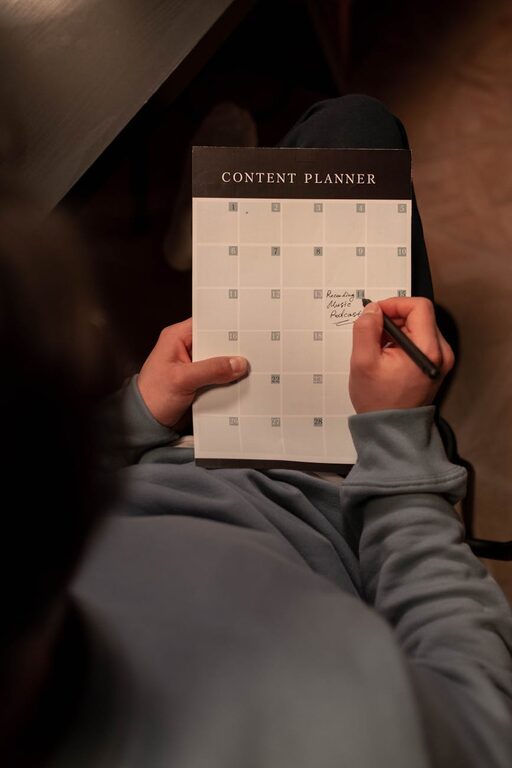Creating a weekly reset routine is a powerful way to recharge, organize, and prepare for the week ahead. It helps clear mental clutter, realign your goals, and foster a sense of control and balance in your life. Whether your weeks are busy or laid-back, a reset routine tailored to your needs can boost your well-being and productivity.
In this post, we’ll walk through how to design an effective weekly reset routine that works for you, with practical tips and ideas to inspire your own process.
Why a Weekly Reset Routine Matters
Our lives can quickly become overwhelming with obligations, digital distractions, and endless to-do lists. A dedicated time to pause and reset helps prevent burnout by giving you space to:
– Reflect on the past week’s successes and challenges
– Organize your tasks and environment
– Set priorities and intentions for the week ahead
– Practice self-care to nurture your mental and physical health
By committing to a weekly reset, you create a rhythm and reliability that supports long-term well-being and goal achievement.
Step 1: Choose the Best Day and Time
The first step is to find a consistent day and time that you can dedicate to your reset routine. For many, Sunday evening or Monday morning works well since it nicely separates one week from the next.
Consider your schedule, energy levels, and lifestyle habits. Some people prefer Sunday after a relaxing day, while others opt for early Monday to gain a fresh start. Pick a time when you’re unlikely to be distracted or rushed.
Step 2: Define Your Reset Routine Goals
Before jumping into activities, think about what you want your reset to achieve. Some common goals include:
– Planning and organizing the upcoming week
– Decluttering your environment or workspace
– Reviewing personal or work goals
– Practicing relaxation or mindfulness
– Reviewing finances or meal planning
Knowing your goals helps shape your routine and keeps it focused.
Step 3: Plan Your Weekly Reset Activities
With goals in mind, list out the activities you want to include. Here’s a suggested framework that you can customize:
1. Reflect on the Past Week
– Review your calendar and to-do lists
– Celebrate wins, big or small
– Note challenges or things to improve
This reflection process encourages gratitude and learning.
2. Clear Physical and Digital Clutter
– Organize your workspace or living area
– Delete unnecessary files and emails
– Prepare your clothes or essentials for the week
A tidy space can help create a clearer mind.
3. Plan Your Week
– Schedule appointments, meetings, and events
– Prioritize your top tasks and projects
– Set realistic goals for the week ahead
Use a planner, app, or journal—whatever suits your style.
4. Self-Care & Mindfulness
– Practice meditation, deep breathing, or journaling
– Prepare a relaxing bath or do some light stretching
– Sleep early or prepare healthy meals
Integrating self-care rejuvenates your body and mind.
5. Financial & Life Administration
– Review your budget and expenses
– Pay bills or make important calls
– Plan meals and grocery lists
This category helps prevent unexpected surprises during the week.
Step 4: Set a Time Limit
Your reset routine doesn’t have to be lengthy; 30 minutes to an hour can be enough. Setting a time limit keeps you focused and prevents it from becoming a chore.
If you prefer, break your routine into shorter sessions—for example, 15 minutes of reflection and 15 minutes of planning.
Step 5: Prepare Your Materials in Advance
Have your tools handy before starting:
– Planner or journal
– Pens and markers
– Device for calendar and task management
– Necessary household items for tidying or self-care
Preparation helps keep your routine smooth and enjoyable.
Step 6: Stick to the Routine and Adjust as Needed
Consistency is key. Try to do your weekly reset routine at the same time each week until it becomes a habit.
However, be flexible and adapt your routine based on your evolving needs and schedule. If a certain activity isn’t serving you, replace or modify it.
Sample Weekly Reset Routine Template
| Step | Activity Example | Time Needed |
|——————————|————————————————-|—————-|
| Reflect on the past week | Review journal; note successes and challenges | 10-15 minutes |
| Declutter | Clean desk or living room area | 10 minutes |
| Plan the upcoming week | Schedule tasks and events | 15-20 minutes |
| Self-care | Meditation or light stretch | 10-15 minutes |
| Financial/Administrative Tasks| Review budget; prep grocery list | 10 minutes |
Adjust this template to fit your preferences and available time.
Tips for Successful Weekly Resets
– Make it enjoyable: Play your favorite music or light a candle.
– Involve family or roommates if appropriate.
– Reward yourself after completing the routine.
– Limit distractions: turn off notifications and avoid multitasking.
– Track your progress by noting any changes you notice.
Final Thoughts
Designing a weekly reset routine is a simple yet powerful way to reset your mind, body, and surroundings. It helps you step into the new week feeling refreshed, organized, and focused.
Start small, stay consistent, and tailor your routine to match your lifestyle. Over time, this practice will transform your approach to productivity and self-care, making each week more manageable and enjoyable.
Ready to start your own weekly reset? Pick a day this week and begin crafting your routine today!




